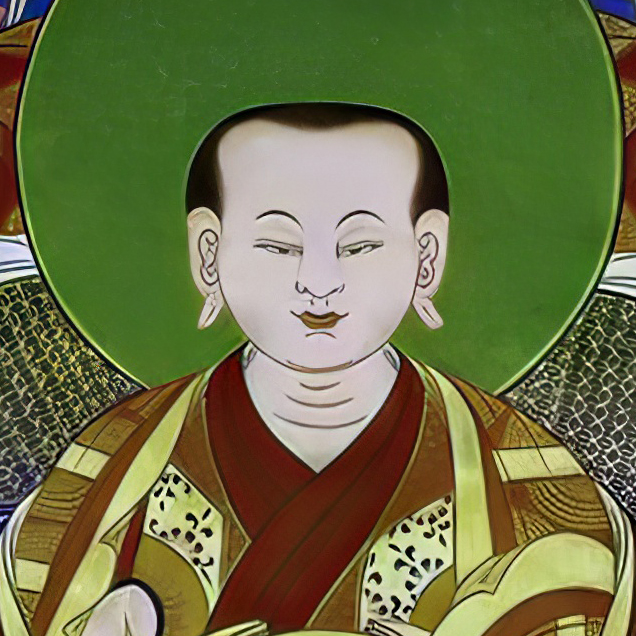
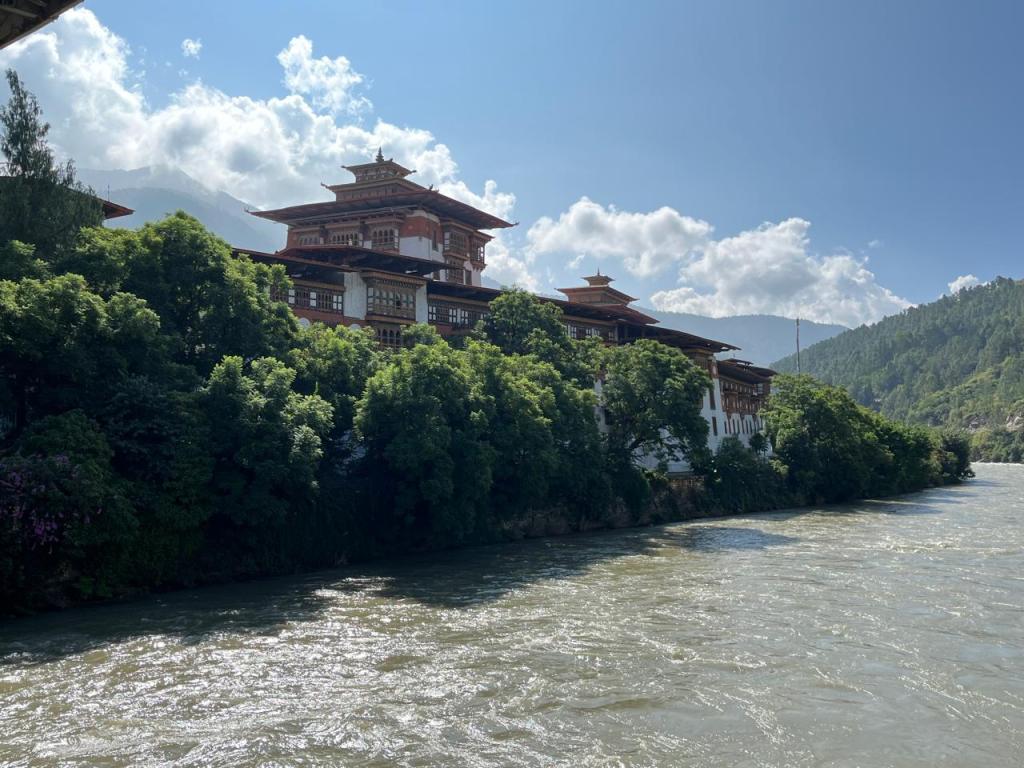
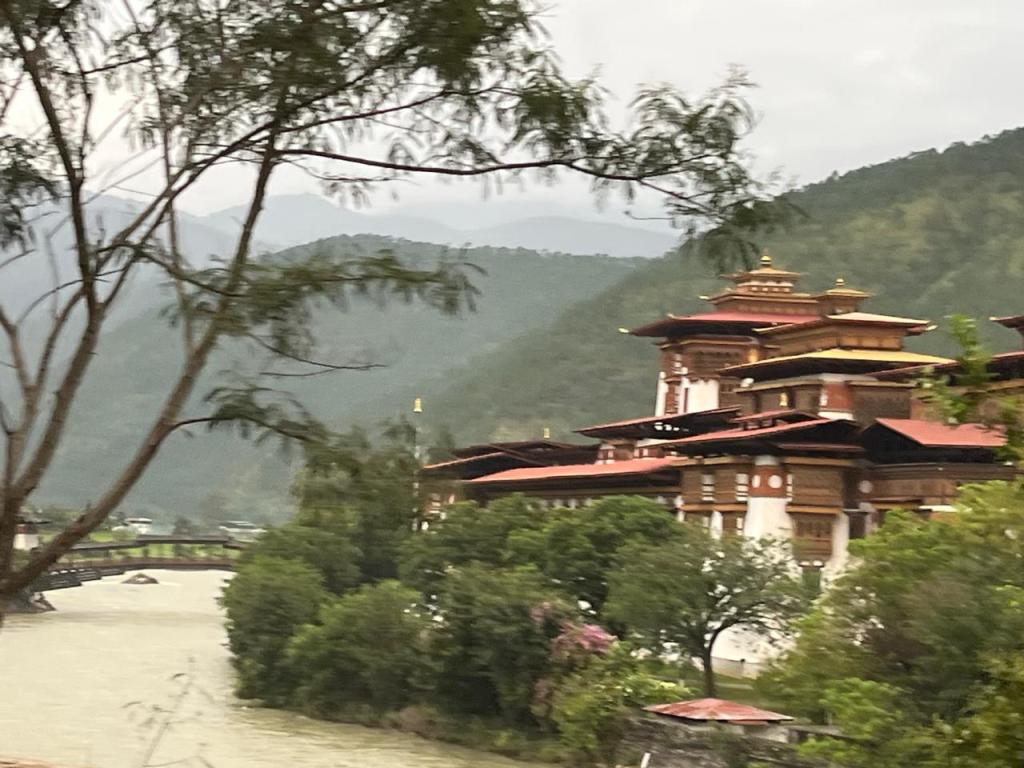
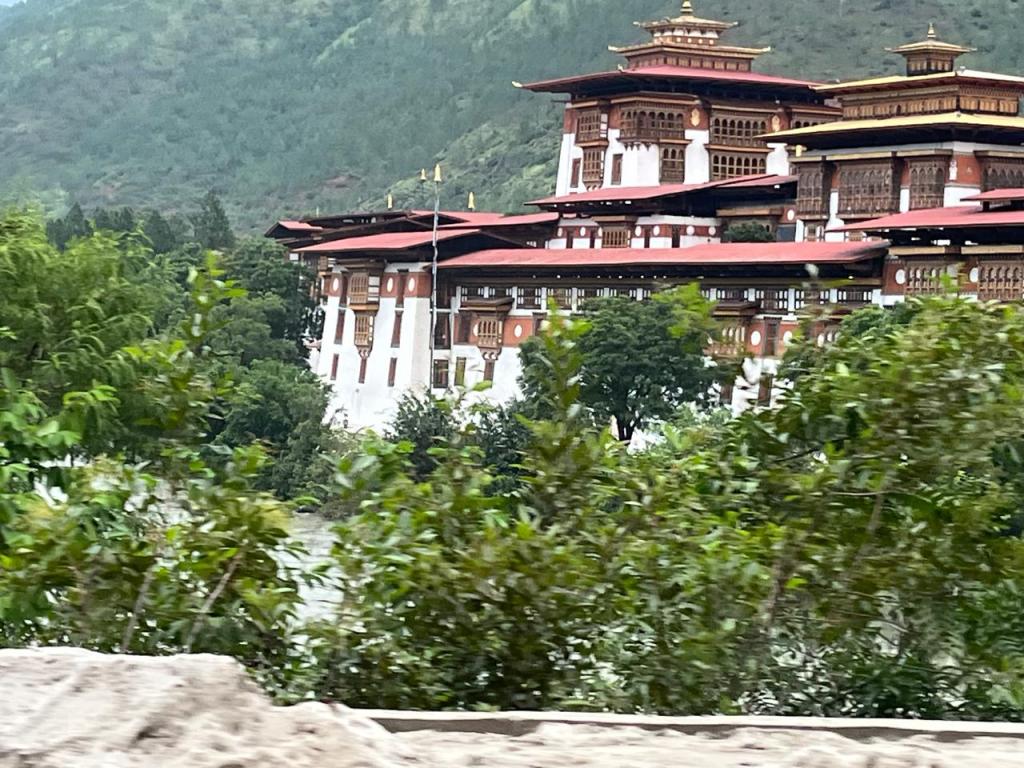



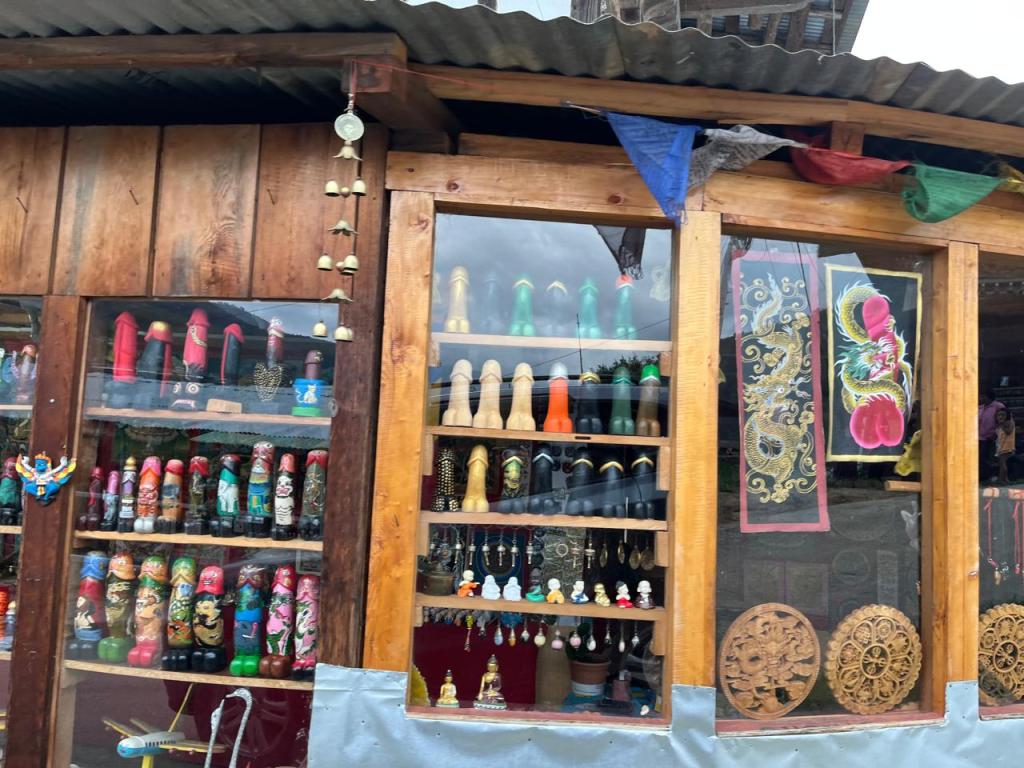

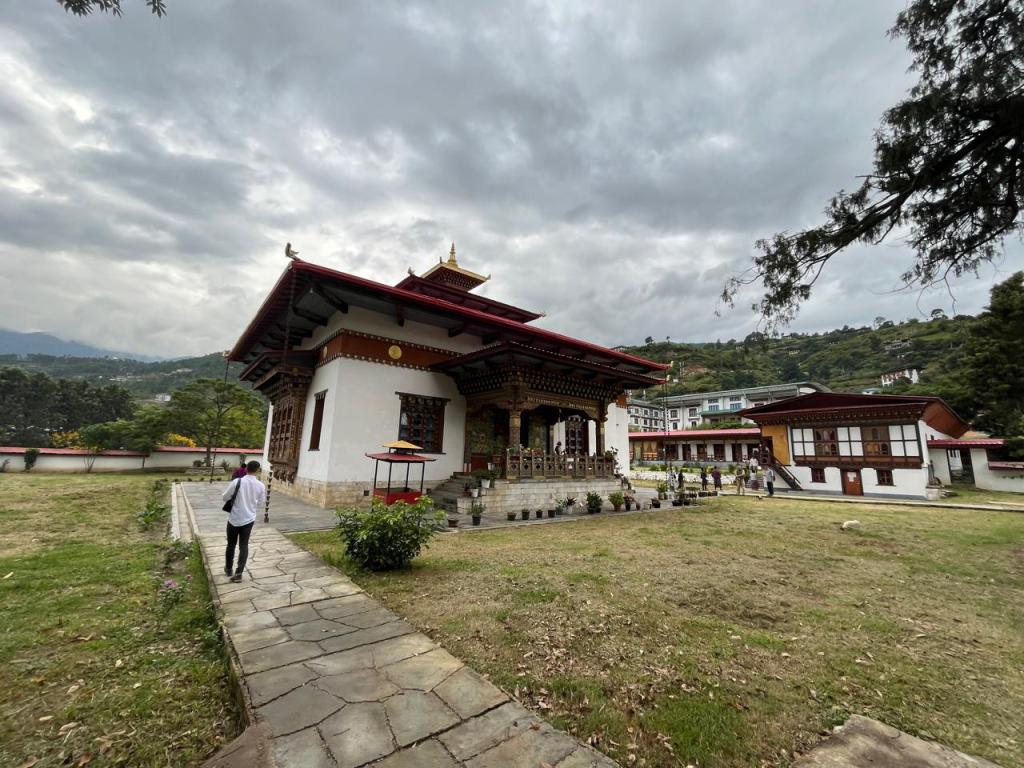


Visit Punakha Dzong. (Built in 1637)
The Punakha Dzong (the palace of great happiness or bliss) is the administrative centre of Punakha District in Punakha, Bhutan. The dzong was constructed by Ngawang Namgyal, in 1637–38. It is the second oldest and second largest dzong in Bhutan and one of its most majestic structures. The dzong houses the sacred relics of the southern Drukpa Lineage of the Kagyu school of Tibetan Buddhism, including the Rangjung Kasarpani and the sacred remains of Ngawang Namgyal and the tertoen Pema Lingpa.
CHHIMI Lhakhang
Drukpa Kuenley, also known fondly as the “Divine Madman”, thanks to his bizarre behaviour. He is often depicted as roaming naked in the freezing weather of Bhutan, carrying a bow and arrow. Sometimes he has a cup of wine and his dog, Sachi next to him.
Drukpa Kuenley is a popular Buddhist saint of the Drukpa Kagyu lineage. He was known for his unconventional and unorthodox teaching, often relayed with sexual connotations. He questioned the preconceived notions of society, using bizarre means to expose hypocrisies. His target was usually the establishment, including the monastic community. Mostly, he is remembered for using his phallus to enlighten beings and subdue demons. His phallus yielded such power that it was referred to as the “Thunderbolt of Flaming Wisdom”.
On the same note, Drukpa Kuenley earned the nickname “The Saint of 5,000 Women” because of his method of guiding women to enlightenment. He would look for good-looking women, have sex with them, and then lead them to ultimate enlightenment with his “thuderbolt”. Word is that he refused to bless anyone who did not bring with them a beautiful woman and a bottle of chang (alcohol). He once declared that, “Wine and women are my meditation.”
The divine madman’s craziness does not end there. Another tale tells of a time when the saint was given a sacred thread to tie around his neck. But instead of doing it the conventional way, he tied the thread around his phallus, in hopes that it would help him with the ladies. As a result of this, you see depictions of the phallus with a ribbon around it.
Today, the phallus is a symbol of fertility and good luck, thus painted as murals on walls everywhere in Bhutan, in particular the western side of the country. Furthermore, the phallus murals are believed to be able to ward off evil spirits.
In yet another story, Drukpa Kuenley urinated on a thangkha. The urine later turned to gold. This thangka is currently preserved at Tango Monastery.
Apart from the sexual, Drukpa Kuenley’s teachings often included elements of singing, dancing, and poetry.
A poem he wrote when he met Pema Lingpa, the famed treasure revealer, is as follow:
I, the madman from Kyishodruk,
Wander around from place to place
I believe in lamas when it suits me
I practice the Dharma in my own way
I choose any qualities, they are all illusions
Any gods, they are all the Emptiness of the Mind
I use fair and foul words for Mantras, it’s all the same
My meditation practice is girls and wine
I do whatever I feel like, strolling around in the Void
Last time I saw you with the Bumthang trulku
With my great karmic background, I could approach
Indeed it was auspicious to meet you on my pilgrim’s round!
Wooden phallus
It is said that if one carries this wooden phallus around the monastery of Drukpa Kuenley it will help with fertility.
In Bhutan, the phallus (often with a ribbon tied to it) is a revered symbol tied to spirituality, good fortune, and protection and can be seen at the doors of houses etc. Some people hang a small phallus around their neck.
View from Chimmi Lhakang
- Khuruthang Lhakhang
- (the temple existed at unknown year and main statue inside the temple is a Guru Rinpoche statue that spoke)
- it said they wanted to move the Guru Rinpoche statue to another location , however after many failed attempts to move the statue , it spoke saying ‘don’t move me, I am happy here.

